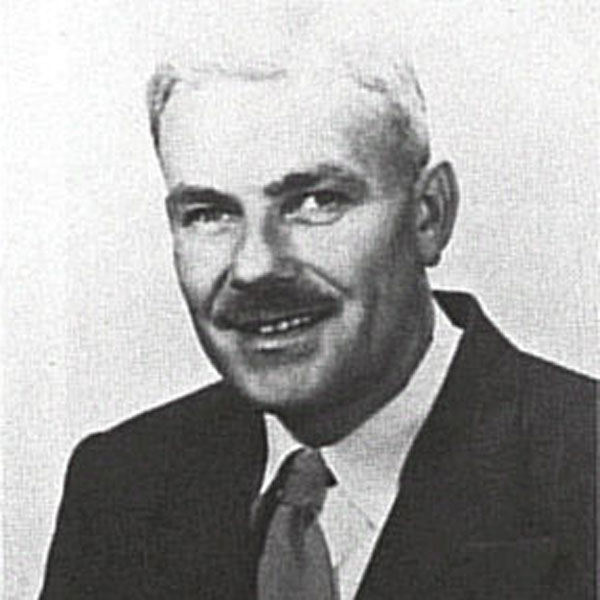George Baker, 1908–1975
Geologist
George Baker was raised in the Quakers Orphanage in Ryelands Road and attended Leominster Grammar School.
At the age of 16 he migrated to Australia and worked as a Geologist. He became an authority on ‘Australites’ — particles formed by meteor impacts — and published many papers on the subject.
His research on these structures contributed to the early development of heat shields for space capsules.

George Baker was born in Coventry. His mother died when he was only seven months old and he was first cared for by an aunt, but later moved to the Quaker Orphanage in Leominster. While there he won a scholarship to Leominster Grammar School, where he thrived as a scholar and athlete, ultimately becoming a school prefect.
In March 1925, at the age of 16 he travelled alone to Victoria, Australia to join other members of his family. His passage was paid by a Quaker solicitor in Leominster.
George found work almost immediately as a junior assistant at the University of Melbourne’s Geology School. Despite his age, he was permitted to attend lectures and subsequently gained a Bachelor of Science degree. On graduating, he completed his master’s degree conducting field and laboratory research near Melbourne, and became known for “his meticulous thoroughness, his dependability, and his courage in overcoming difficulties”.
Baker’s scientific work was concerned with Australites or tektites — small button shaped bodies made of black, green, brown, or grey natural glass. By scientific analysis Baker was able to prove these objects are formed from the debris ejected during meteorite impacts. Indeed, some Aboriginal groups in Western Australia and the Nullabor Plains had always associated tektites with meteors and cosmic impacts — these “sky stones” were valuable to them as surgical tools and implements for use in ritual and ceremony.
Baker was recognised for the quality of his research work by the University of Melbourne through award of the David Syme Research Prize in 1944, and was conferred the degree of Doctor of Science (DSc) by the university in 1956.
Maintaining his base at the University’s Geology School, Baker first became a research officer with the Commonwealth Scientific and Industrial Research Organisation mineragraphic section and by the time of his retirement in was their senior principal research scientist. He also maintained a role as honorary associate in mineralogy with the National Museum of Victoria.
Baker’s research work on australites, meteorites and petrology in Victoria was published in many international journals including Nature, the American Journal of Science and American Mineralogist. In all, he published 135 papers and monographs. He was the inaugural recipient of the Royal Society of Victoria’s Medal for Excellence in Scientific Research, awarded on the centenary of the Society’s formal foundation in 1959.
George Baker died in Melbourne on 25 August 1975, leaving his extensive collection of 2,500 Victorian tektites to the National Museum of Victoria.

